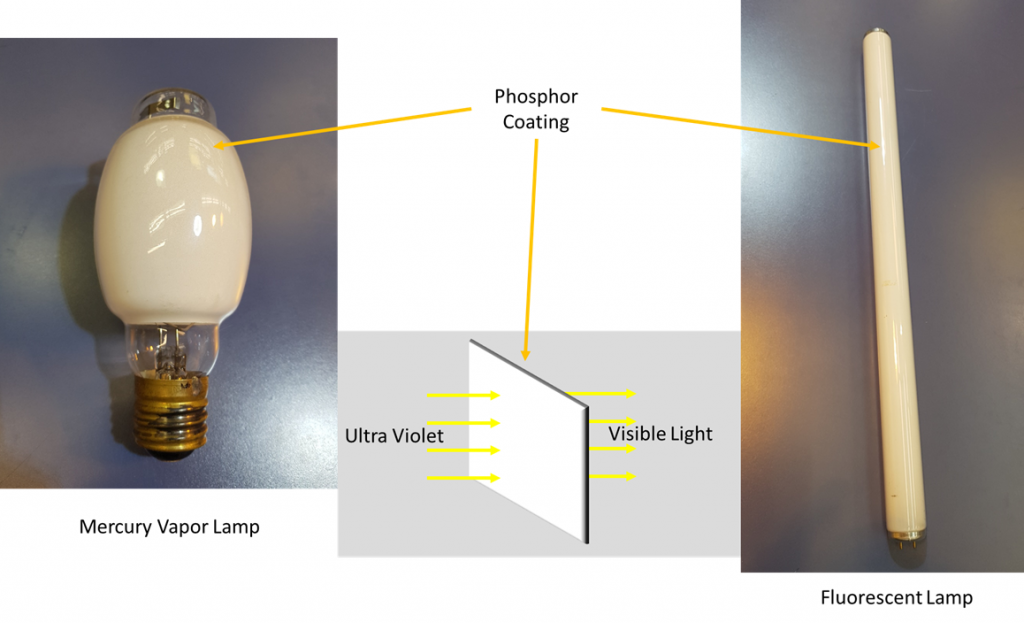17 Phosphor Coating
Aaron Lee
Some gas discharge lamps emit light directly in the visible portion of the spectrum, while some produce light in the ultra violet (UV) portion of the spectrum. If any UV light is produced, as in the case of the fluorescent lamp, it will include a phosphor coating, which when struck by UV light, glows in the visible portion of the spectrum.

When free flowing electrons collide with mercury atoms in the arc chamber of the fluorescent lamp, the EM radiation emitted is in the UV portion of the spectrum, which is invisible to human eyes, and can be hazardous at certain levels.
The inside of a fluorescent tube is coated with a layer of phosphor which when struck by UV radiation, absorbs the energy and releases it in the form of visible light. This has the effect of slowing down, or lengthening the wavelength of the photons emitted from the lamp. Any material that glows in the presence of UV light is said to be fluorescent.
Different levels and types of phosphor coating allow lighting manufactures to make fluorescent lamps with different color temperatures.
Some specialized fluorescent lamps utilize the UV radiation they produce, for example, applications such as lamps for tanning beds and germicidal lamps used for sterilization purposes.

